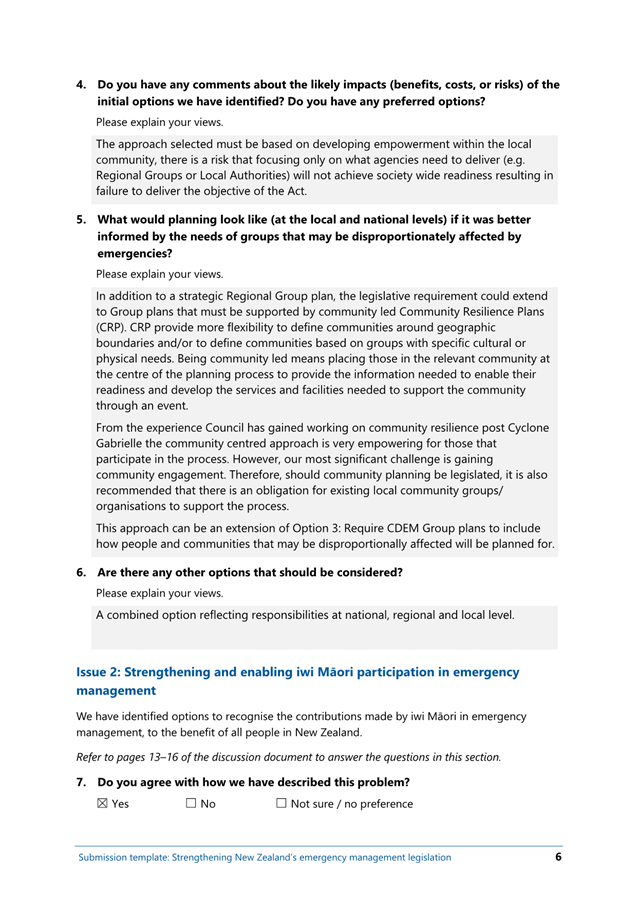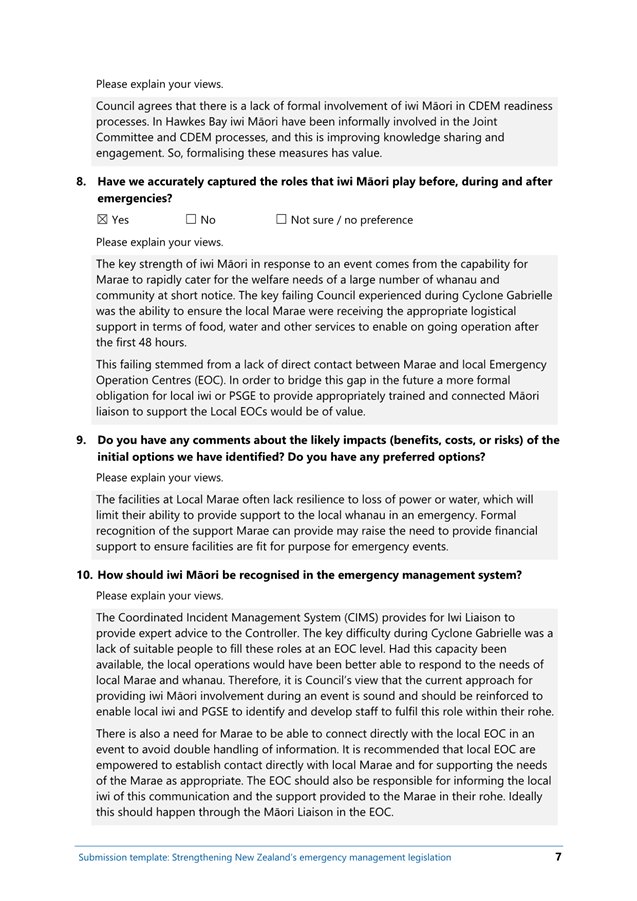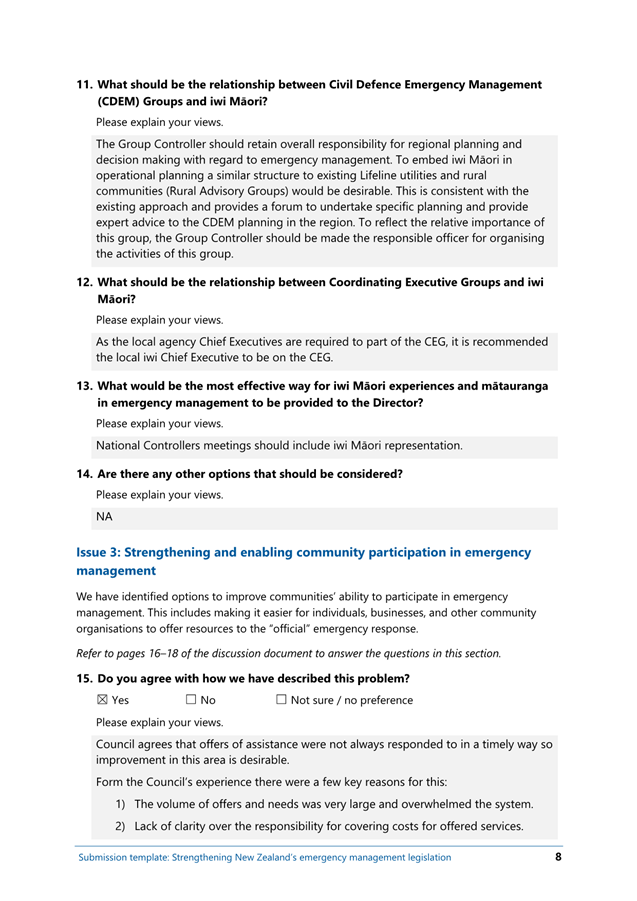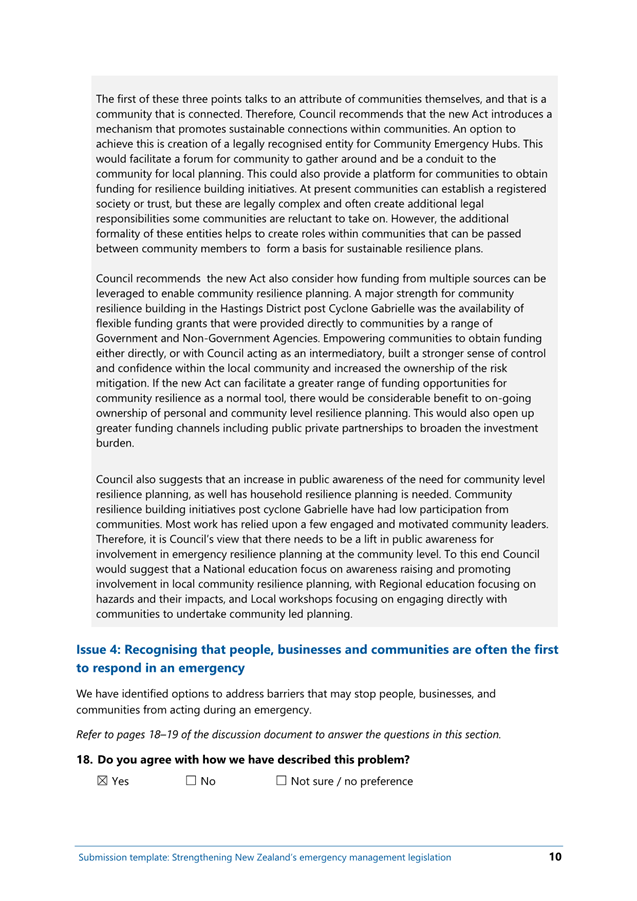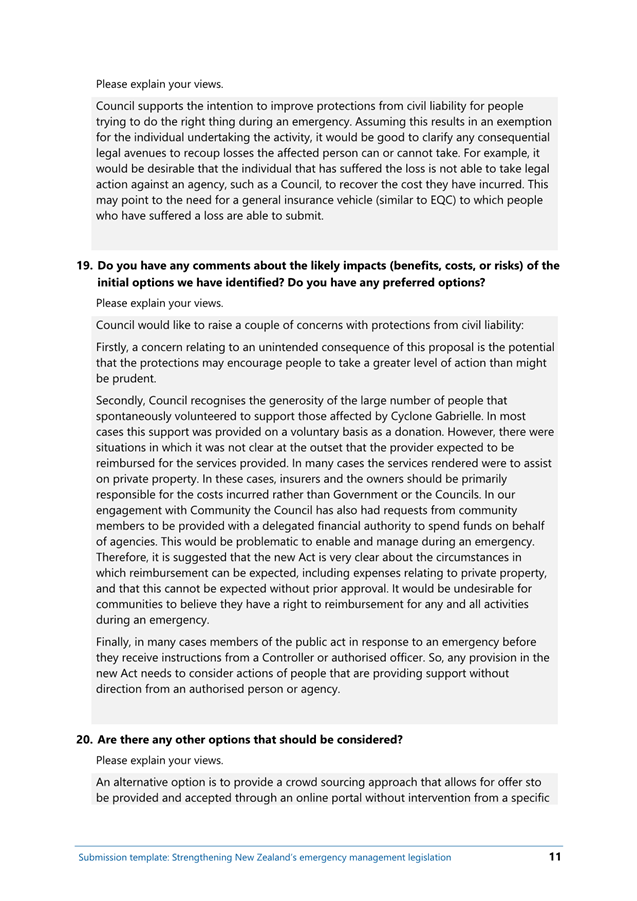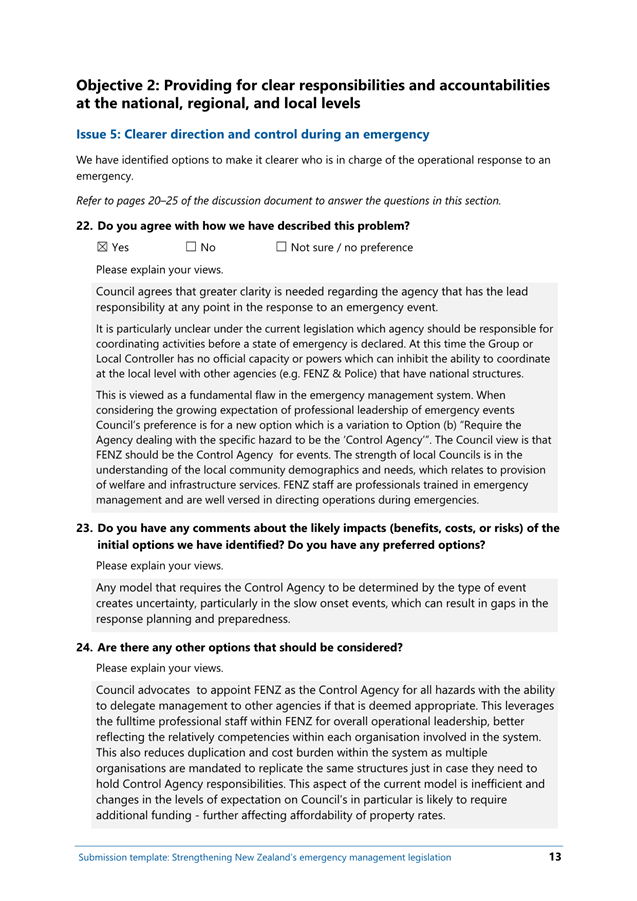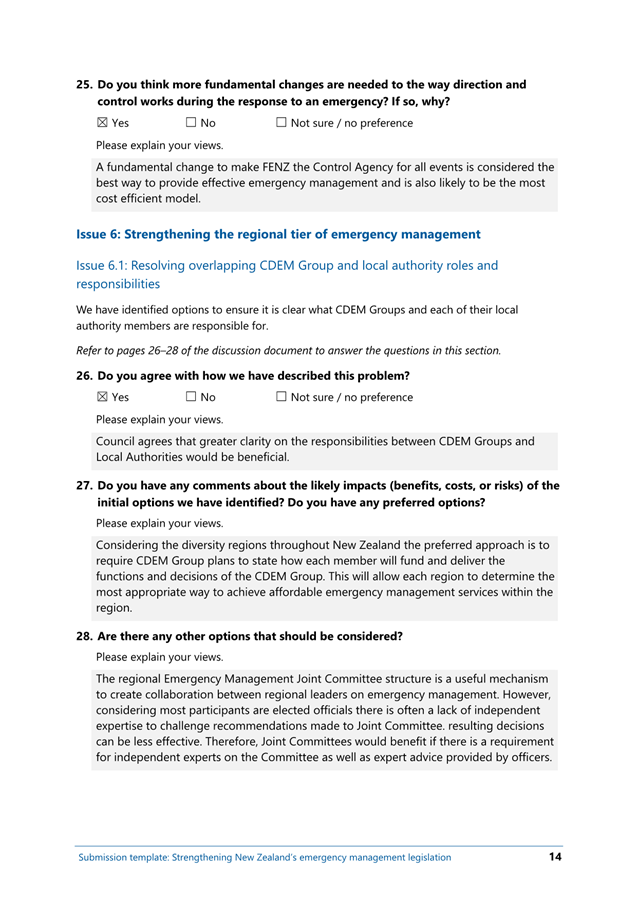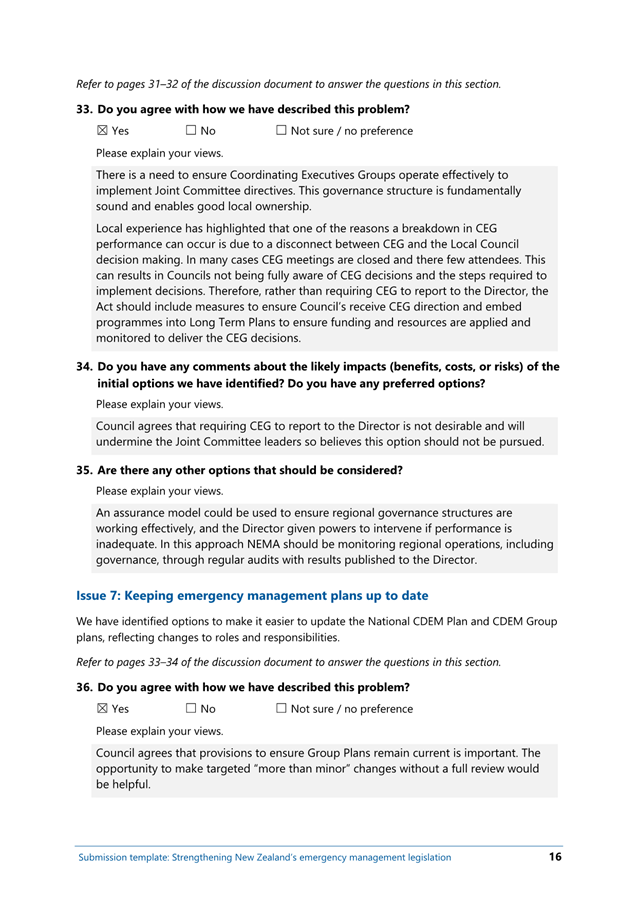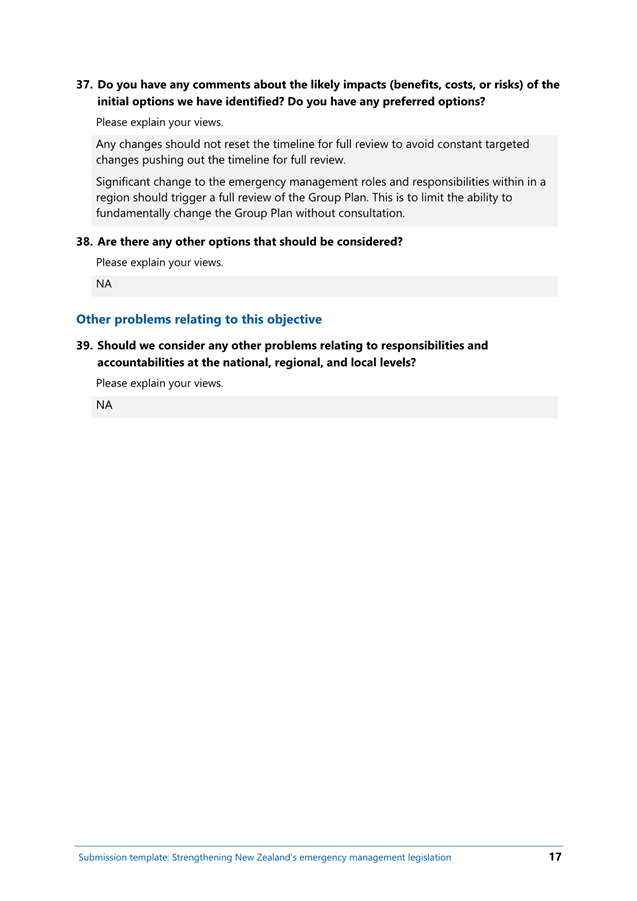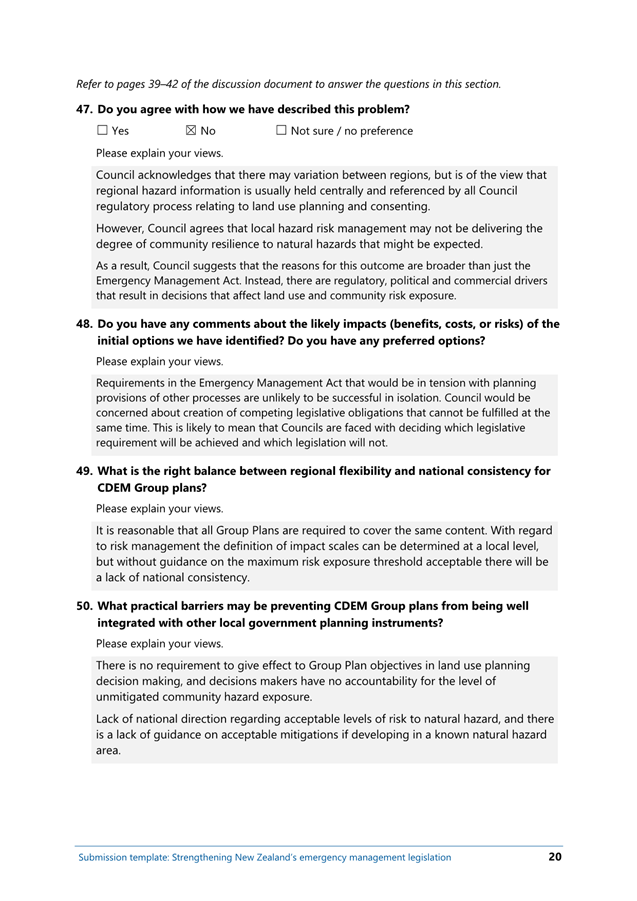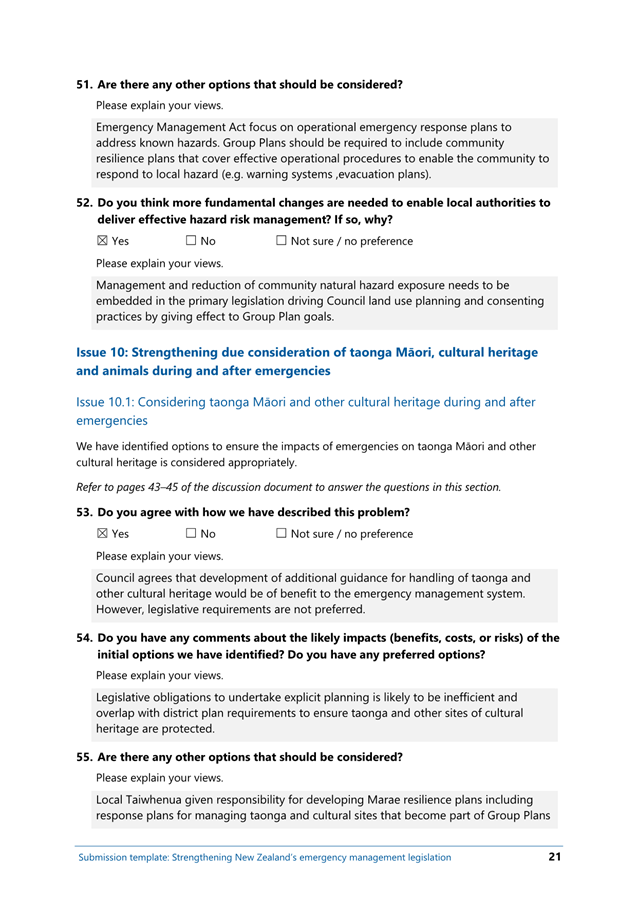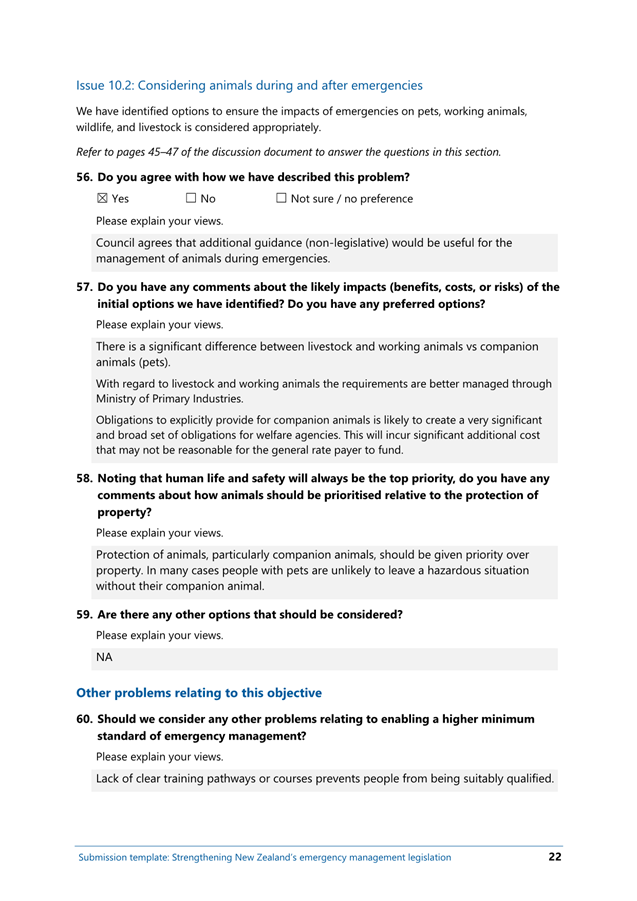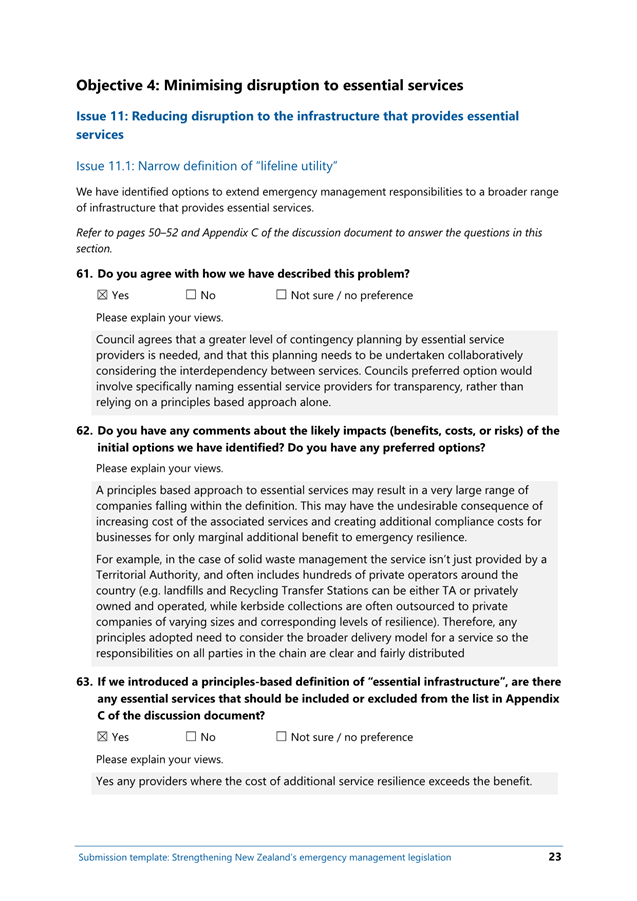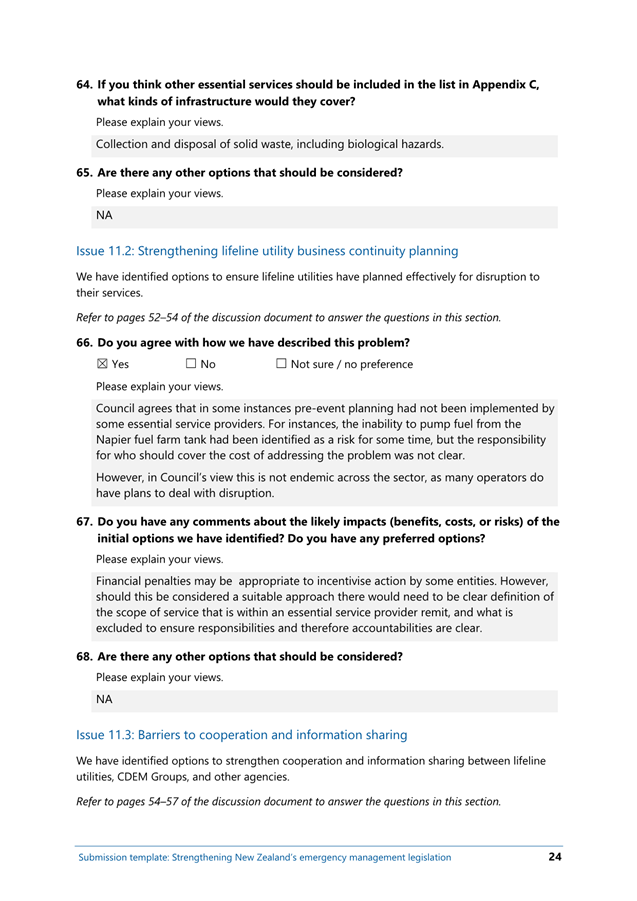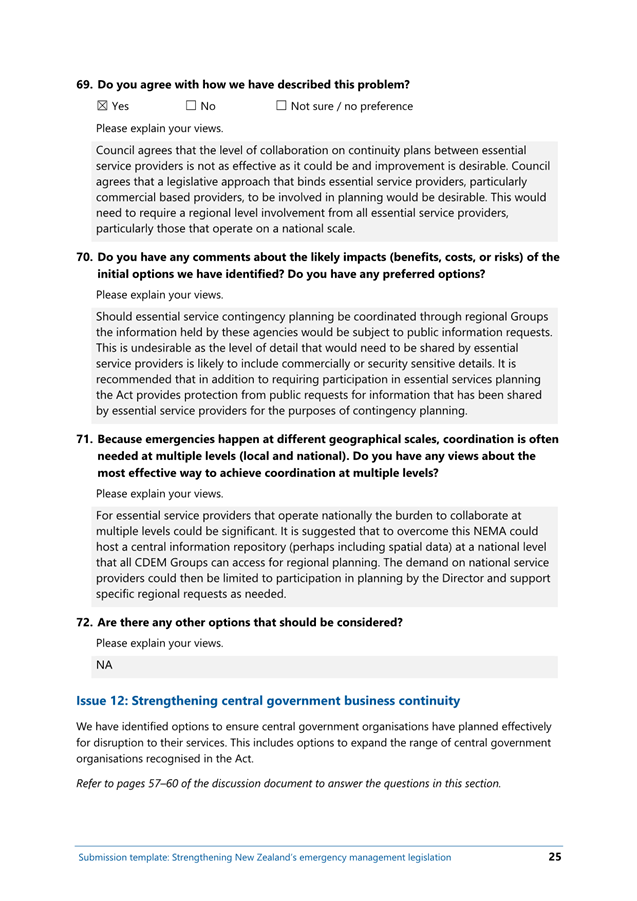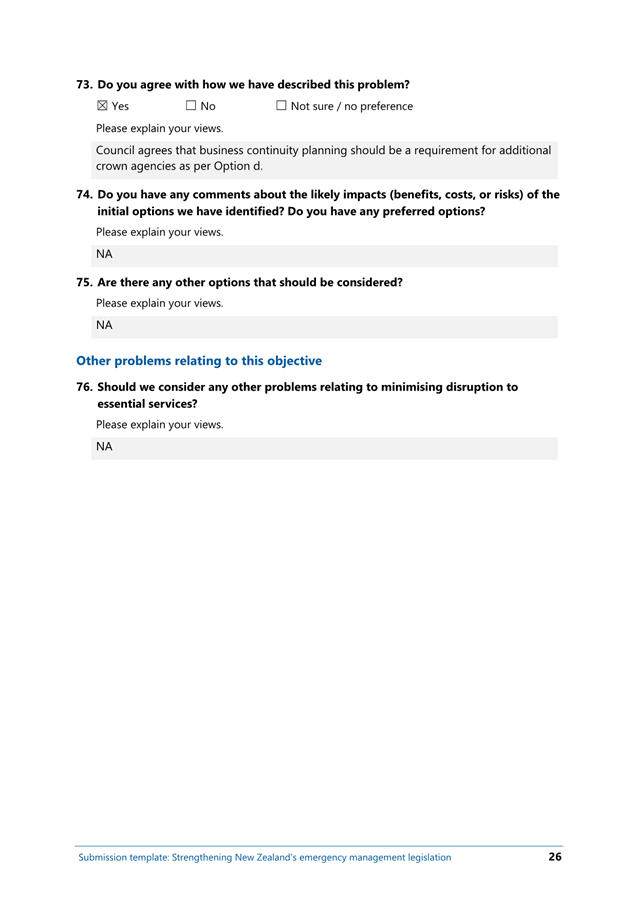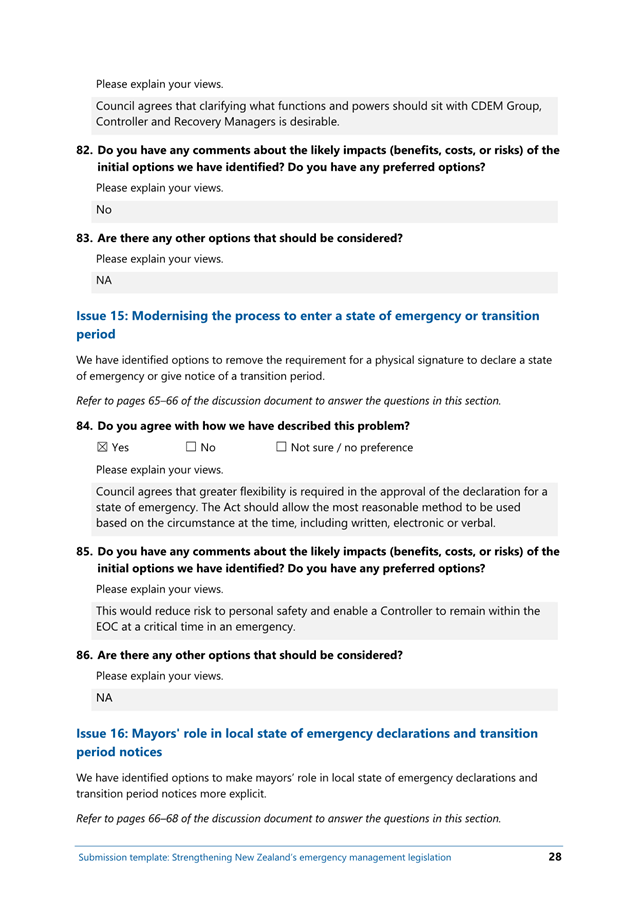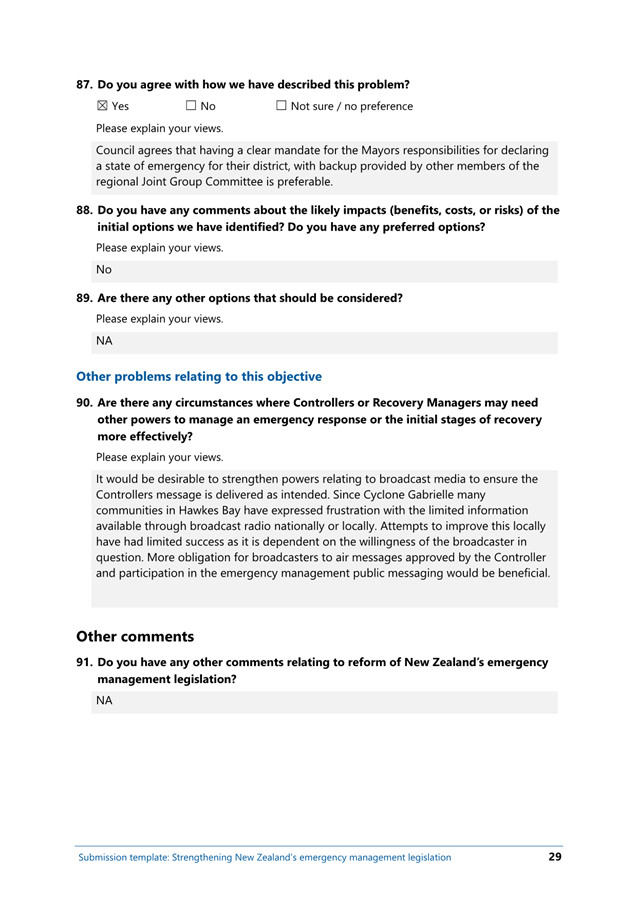
|
Tuesday, 27 May 2025 |
Te Hui o Te Kaunihera ā-Rohe o Heretaunga
Hastings District Council: Strategy and Recovery Committee Meeting
Te
Rārangi Take
Report to Strategy and Recovery Committee
|
Nā: From: |
David Elliott, Project Manager - Strategy |
|
Te Take: Subject: |
Retirement of Category 3 Voluntary Buy-out Policy |
1.0 Executive Summary – Te Kaupapa Me Te Whakarāpopototanga
1.1 It is recommended that the Category 3 Voluntary Buyout Policy (the Policy) be formally retired, effective from 1 July 2025.
1.2 The Category 3 Voluntary Buyout Programme (the Programme) has made substantial progress in supporting Category 3 property owners to resettle in safer areas. It is expected that by 30 June 2025, all Category 3 property owners will have made a final decision on whether to accept the Council’s offer. At the time of writing, only five properties remain in the Programme:
· One property owner is yet to decide whether to accept the Council offer.
· Two property owners are deciding between the Council offer and the Crown-led Kaupapa Māori Pathway (KMP).
· Two properties are scheduled to settle by the end of May 2025, with demolitions to be completed by the end of June.
1.3 On 9 October 2023, Council entered into the Hawke’s Bay Crown Funding Agreement (CFA), which committed central Government to funding 50% of the voluntary buyout costs (excluding demolition, property maintenance, and disposal related costs). The agreement defines the ‘Category 3 End Date’ as “30 June 2025, unless otherwise agreed”.
1.4 The Crown has confirmed it would not agree to an amendment/extension of the CFA. Therefore, if the Policy remained in place past 30 June 2025, Council would bear sole financial cost/risk for the 13 eligible properties that have previously declined the offer. Clause 5.3 of the Policy allows for eligible property owners who have declined an offer to request that Council recommence the offer process. The decision to recommence the offer process is completely at Council discretion. The maximum financial exposure if the Policy is left open is estimated at between $3.5-4.5 million. This represents the estimated cost of voluntary buy-outs for the 13 properties that have previously declined the offer.
1.5 Council adopted the Policy on 14 September 2023 to enable and support the new activity of purchasing Category 3 properties and associated residential property rights. Clause 9 of the Policy notes that - “The Policy shall be reviewed on or before 30 June 2025, including as to whether it should continue to apply”.
1.6 The Voluntary Buyout Office (VBO) began operations on 23 October 2023. The Programme was largely completed by the end of 2024, and the VBO closed on 31 December 2024. Provision was made to support a small number of Category 3 property owners who needed further time to work through property specific and personal matters.
1.7 On 3 December 2024, the Strategy and Recovery Committee received the ‘Voluntary Buyout Programme Review and Lessons Learnt Report’. This report noted that a final close-out report would be provided to Council in early 2025, once all remaining property owners had either received an offer or ceased to engage in good faith. The final report would include recommendations regarding formal conclusion of the Programme and the retirement of the Policy.
3.0 Background – Te Horopaki
3.1 The Hawke’s Bay Crown Funding Agreement defines the ‘Category 3 End Date’ as “30 June 2025, unless otherwise agreed” and in developing the Policy (see Attachment 1), it was anticipated a review of whether the Policy should continue to apply would be required on or before 30 June 2025.
3.2 The Voluntary Buy-out Programme was substantially concluded by 31 December 2024 with provision made to support a small number of Category 3 property owners who needed further time to work through property specific and personal matters. A ‘Voluntary Buyout Programme Review and Lessons Learnt Report’ was presented to the Strategy and Recovery Committee on Tuesday 3 December 2024.
3.3 In developing the Policy, the Councils identified objectives and principles, and these have been used to implement the Programme. These were captured in the 3 December 2024 report to the Strategy and Recovery Committee and are replicated below with an updated assessment of whether, and how, these objectives and principles have been achieved and upheld.
|
Policy objectives |
Comment (as at 15 May 2025) |
|
(a) The removal of risk-to-life associated with people living on Category 3 land. |
This objective has largely been achieved and by Programme completion will have been achieved. This is reflected in the high uptake of offers by eligible property owners. Of the 167 eligible Category 3 properties, at time of writing 90% had approved the offer and 89% had settled. VBO forecasts assume 92% of offers will have been approved by Programme completion through either the Council led or Kaupapa Māori Pathway. To date, the number of properties where owners have declined the offer or decided not to participate in the Programme is 13 (or 8%). All settled dwellings will have been demolished by 30 June 2025. |
|
(b)(i) Residents have clear pathways and certainty about the offer. |
This objective has been achieved. · 98% of properties have actively engaging in the process. · 96% of eligible property owners have received an offer. · All offers have been approved by the Independent Advisory Panel (IAP) to ensure the offer construction and the process has been consistent with the Policy approved by Council. · Where ‘special circumstances’ consideration has been requested by owners, the IAP has assessed the VBO’s recommendation to ensure the factors contained in the Policy have been appropriately evaluated. |
|
(b)(ii) Long term positive outcomes for the whole community and the environment. |
This objective has been met. This objective has been relevant to any issue of interpretation or situation where ‘special circumstances’ may arise, particularly where there have been choices to permanently reduce risk that Category 3 land will be used for anything other than non-residential uses. The demolition programme achieved high rates of diversion of material (around 73% on average and up to 92% in some cases) helping to reduce the impact on the environment. Proceeds from the disposal of Category 3 properties and/or dwellings that can be relocated instead of demolished, that the Council has acquired as part of the Programme, have helped to reduce the overall cost of the Programme to ratepayers. The other key objective of the disposal process is to maximise the productive use of the land. This will lead to long term positive outcomes for the community. |
|
(b)(iii) Affordability for ratepayers. |
This objective has been achieved. The initial cost estimate of the Programme was presented to Council on 14 September and noted: “At the time of Crown negotiations, it was assumed that there would be 155 properties subject to an offer, and it was estimated the value of properties were in the order of $140 million, which having taken account of insurance proceeds and a 90% uptake of the offer occurred, it meant that the net cost was in the order of $80 million. There were also some assumptions about land without residential dwellings. Once costs of managing the process of $5 million and $5 million demolition costs and other costs were added the sum approximated $100 million.” Latest financial forecasts indicate the overall cost to HDC will be around $44.7m. This is around $5.3 below the $50m cap approved by Council and reflected in the HB Crown Funding Agreement. Effective management of the demolition programme has significantly reduced financial risks for Council and ratepayers. Initial forecasts indicated demolition costs could be as high as $70k per property. Actual costs of between $30-40k per property have been achieved. |
|
Policy principles |
|
|
(a) Acting in good faith. |
This principle has been applied by the VBO team in the following ways: · Proactive problem solving and engagement to achieve best possible outcomes for owners. · Timely and transparent provision of information to owners and Crown partners. Significant time taken to ensure owners have the information they need and/or the time and care taken to respond to owner queries and concerns. All key documents and dashboards have been made available on Council VBO webpage. · Altering settlement conditions to assist owner’s needs. Time extensions have been provided where needed. · Consistency of approach. Ensuring all owners have been treated equally and fairly within the parameters provided for by the Policy. |
|
(b) Treating people with respect. |
This principle has been applied by the VBO team in the following ways: · Empathetic engagement with owners, led by the VBO Cat 3 Connectors. This approach has recognised the trauma owners have experienced and the emotional nature of the process for many. · A professional response to challenges and disputes. · Compassionate deconstruction of dwellings, including going the extra mile for many owners. |
|
(c) Working to achieve timely outcomes. |
This principle has been applied and achieved by the VBO team in the following ways: · The Programme was substantially completed in under 1 year (90% of offers were presented in 156 working days). · The fastest settlement took 42 working days (from initial meeting to final settlement). · The VBO team worked closely with owners to move at a pace that owners could support. This included allowing extra time where needed to allow owners to seek further advice and/or information. |
4.0 Discussion – Te Matapakitanga
4.1 Since the closure of the VBO at the end of 2024, officers have been supporting the small number of remaining owners. This has involved 1.5 Council FTEs with ongoing support by The Property Group (TPG). From the end of June 2025, the 1.5 FTE resource will no longer be available to Council given the end of contractual relationships (i.e. end of fixed term agreements and staff leaving Council for other opportunities).
4.2 It is expected that by 30 June 2025, all Category 3 property owners will have made a final decision on whether to accept the Council’s offer. At the time of writing, only five properties remain in the Programme:
· One property owner is yet to decide whether to accept the Council offer.
· Two property owners are deciding between the Council offer and the Crown-led Kaupapa Māori Pathway (KMP).
· Two properties are scheduled to settle by the end of May 2025, with demolitions to be completed by the end of June.
4.3 These property owners have been advised that all settlements would need to be finalised by 30 May 2025 to allow adequate time for demolition to be completed prior to 30 June 2025. While officers have confidence that there is a pathway for full completion of the programme by 30 June 2025, intensive support will be required for a couple of property owners and whanau over the next few weeks to support decision making. Council officers are working closely with Maungaharuru-Tangitū Trust (MTT) to support whanau who have the option of the Council-led process and the Crown-led process. Given the policy differences between the Council-led process and the Crown-led process it is expected that the offer from the Crown will be of greater benefit to these owners.
4.4 In recent weeks two property owners who had previously declined the Council offer or declined to receive a Council offer have made contact with Council to discuss voluntary buyout matters. One property owner subsequently agreed to accept the previous Council offer that was readvanced at Council’s discretion. This property is one of the properties that will settle at the end of May. Officers remain in discussion with the other property owner. Provision has been made in the financial forecasts and Council has received the Crown contribution for this property should they decide to settle prior to 30 June 2025.
4.5 Given this interest, officers have made contact with all 13 Category 3 property owners who have previously declined the Council offer or declined to receive a Council offer. Officers noted that Council would be considering advice to formally close the Policy on 27 May 2025, and if that decision was adopted by Council, then the implication would be that it would no longer be possible for Council to consider voluntary buyout requests from Category 3 property owners. Clause 5.3 of the Policy allows for eligible property owners, who have declined an offer to request that Council recommence the offer process. The decision to recommence the offer process is completely at Council discretion. Council officers received no further requests to recommence the offer process.
4.6 The Crown has formally confirmed it would not agree to an amendment/extension of the CFA. Therefore, if the Policy remained in place past 30 June 2025, Council would bear sole financial cost/risk for the 13 eligible properties that have previously declined the offer (given the Policy allows for eligible property owners who have declined an offer to request that Council recommence the offer process). The maximum financial exposure to Council/the Hastings District ratepayer if the Policy is left open is estimated at between $3.5-4.5 million. This represents then estimated cost of voluntary buy-outs for the 13 properties that have previously declined the offer.
5.0 Options – Ngā Kōwhiringa
Option One - Recommended Option - Te Kōwhiringa Tuatahi – Te Kōwhiringa Tūtohunga
5.1 The Policy is formally retired and would cease to have effect from 1 July 2025.
Advantages
· Provides a conclusive end date to the activity enabled by the Policy.
· Is in line with the ‘Category 3 End Date’ of the Hawke’s Bay Crown Funding Agreement.
· Reduces financial risk to Council.
· Would be consistent with contractual arrangements of remaining staff and contractors providing assistance to remaining owners.
· Would allow any future matters to be considered under a revised policy that incorporated the recommendations of the VBO Lessons Learned Report.
Disadvantages
· It would no longer be possible for Council to consider voluntary buyout requests from Category 3 property owners who had previously declined the Council offer or declined to receive a Council offer.
Option Two – Status Quo - Te Kōwhiringa Tuarua – Te Āhuatanga o nāianei
5.2 That the Policy remains in effect until a later specified date.
Advantages
· Would allow Council to consider voluntary buyout requests from Category 3 property owners who had previously declined the Council offer or declined to receive a Council offer.
Disadvantages
· Increased financial risk to Council.
· An additional requirement to maintain Council resources to manage and implement the Policy.
· Would not provide clarity on the end date of the Policy and programme for Council or the community.
· Would likely require an amendment to the Hawke’s Bay Crown Funding Agreement that would have to be negotiated with central Government.
6.0 Next steps – Te Anga Whakamua
6.1 Officers will Continue to support remaining property owners with a view to concluding matters by 30 June 2025.
6.2 Subject to Council approving the recommendations, officers will:
· Confirm with the Crown that Council will formally retire the Policy effective 1 July 2025.
· Prepare a media release advising the community of the official end of the Policy.
|
1⇩ |
Updated-Category-3-Voluntary-Buy-out-Policy-28.03.24 |
CG-17-32-00173 |
|
|
Summary of Considerations - He Whakarāpopoto Whakaarohanga |
|
Fit with purpose of Local Government - E noho hāngai pū ai ki te Rangatōpū-ā-Rohe The Council is required to give effect to the purpose of local government as set out in section 10 of the Local Government Act 2002. That purpose is to enable democratic local decision-making and action by (and on behalf of) communities, and to promote the social, economic, environmental, and cultural wellbeing of communities in the present and for the future. Link to the Council’s Community Outcomes – Ngā Hononga ki Ngā Putanga ā-Hapori This proposal promotes the wellbeing of communities in the present and for the future. |
|
Māori Impact Statement - Te Tauākī Kaupapa Māori There is a separate Kaupapa Māori Pathway that the Crown is leading for the resolution of 33 Whenua Māori properties that are within Category 3 areas. Council’s Policy does not apply to Whenua Māori. All properties that were eligible for Council-led process and the Crown-led KMP process have been provided time to compare the offers from the Council and Crown. |
|
Sustainability - Te Toitūtanga The intent of the Policy is to remove the “intolerable risk to life” that resides in dwellings in Category 3 areas. This provides better long-term outcomes for the community and helps reduce the impact of future severe weather events. Future land use and re-sale strategies focus on returning land to productive use. The demolition programme has produced a high rate of diversion as covered in the Report. |
|
Financial considerations - Ngā Whakaarohanga Ahumoni Addressed in the report. |
|
Significance and Engagement - Te Hiranga me te Tūhonotanga Officers have engaged with every Category 3 property owner over the course of the Programme. The remaining owners are aware that Council will be considering a formal retirement of the Policy effective 1 July 2025. All engagement with property owners has been recorded in the VBO database. |
|
Consultation – internal and/or external - Whakawhiti Whakaaro-ā-roto / ā-waho Engagement has been undertaken between HDC and NCC teams supporting the Programme. Internal consultation has involved HDC Finance, Waste Management, Asset Management, and Public Spaces teams. |
|
Risks These have been addressed in the report.
|














